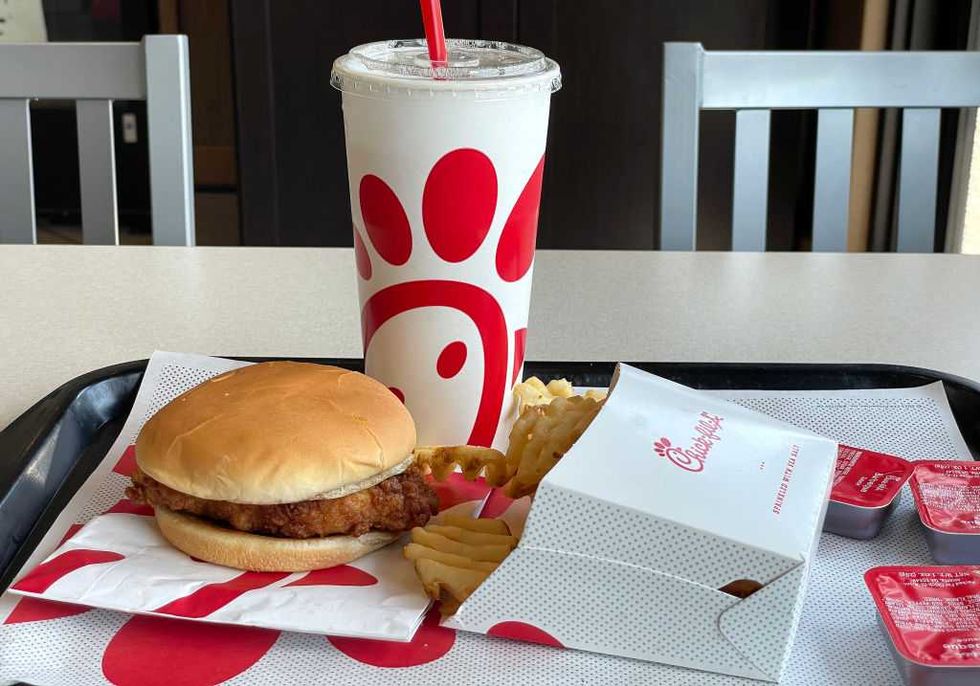Chick-fil-A was once again ranked as the number-one fast-food restaurant in the American Customer Satisfaction Index. It’s the 11th consecutive year the chicken chain has held the top spot.
But it’s not just CFA’s food and service that have made it one of the most popular chains in America. It’s something much more nuanced.
Chick-fil-A didn’t set out with a customer-first strategy and later decide to care about people.
Unlike most other organizations in the industry, Chick-fil-A has discovered an authentic way to integrate business strategy and corporate culture. It’s often said that “culture eats strategy for breakfast.” I’ve found that this statement is only half true. Culture is undoubtedly powerful. It shapes mindsets, decisions, and environments. However, it doesn’t negate the need for strategy.
For true, lasting success, culture and strategy need to feed off each other. When they’re disconnected, the result is often imbalance, misalignment, and, ultimately, mission drift. A business can be healthy yet lack purpose, or have a clear purpose yet operate in an unhealthy way.
Thriving organizations — the ones that stand the test of time — are those that harmonize who they are (their culture) with what they do and how they do it (their strategy). This integration is essential for missionally driven leadership.
Let’s go back to Chick-fil-A.
The company is built on biblical values, honors the Sabbath, fosters servant-hearted leadership, and champions hospitality. These values are operational standards. They guide how team members respond to guests with “my pleasure,” how conflict is resolved, and even how franchise partners are selected.
Chick-fil-A didn’t set out with a customer-first strategy and later decide to care about people. It cared about people first, and from that foundation, the strategy naturally emerged. That distinction matters.
RELATED: Here are 5 Christian companies that join Chick-fil-A in publicly proclaiming their Bible-based views
 Justin Sullivan/Getty Images
Justin Sullivan/Getty Images
When core values shape strategic direction, execution becomes more consistent and more resilient, especially in the face of disruption.
And yet culture alone is not enough. Without strategy, culture easily becomes sentimental, a fond memory of “how things used to be” without the structure needed to drive meaningful outcomes. Leaders must be vigilant in asking: Is our culture shaping what we pursue, how we define success, and how we evolve in the face of change?
The return-to-office debate provides a timely example of how strategy and culture must interact.
In June 2025, Ford Motor Company announced it would require white-collar employees to return to the office four days per week. CEO Jim Farley framed the decision as a step toward a “more dynamic company,” one that fosters in-person creativity and collaboration. That’s a strategic choice, but one rooted in a specific cultural aspiration.
Across industries, leaders are weighing similar decisions. Do we bring everyone back? Stay remote? Create a hybrid solution?
While there’s no one-size-fits-all answer, the wrong approach is to follow trends blindly or make decisions out of fear. The right starting point is culture. What kind of culture are we trying to build? What rhythms cultivate collaboration and mentorship? Do our physical and digital environments reinforce the values we profess or erode them?
For some organizations, RTO policies can rekindle a sense of belonging and a shared mission. For others, flexibility and trust are core values best expressed through remote autonomy. The key is less about whether employees sit at a shared desk and more about whether the strategy supports the cultivation of a shared identity.
In my work with CEOs and business owners, I’ve witnessed a key dynamic among healthy organizations: They let culture shape strategy, and they let strategy reinforce culture. It’s a two-way street.
Right now, culture matters more than ever in attracting and retaining talent, sparking innovation, and uniting multigenerational teams around a shared purpose. That’s why everything from hiring practices and customer service to key performance indicators and product development must reflect and reinforce the values a company holds dear.
It’s one thing to say we value integrity; it’s another to weave it into how we sell, serve, and lead.
So what does this look like in practice?
First, leaders must examine whether their strategic priorities truly align with the values they profess. If your organization touts that people matter most, does your strategy show it through investments in employee development, customer care, and sustainable work rhythms?
Next, consider what kind of culture your current strategy is creating, whether intentional or not. Every strategy has cultural side effects. Sometimes, a relentless drive for performance without margin produces a culture of fear and burnout.
Then, consider your internal language. Do your people have a shared understanding of what terms like “excellence,” “service,” or “innovation” mean within your unique context? Without clarity, even good intentions can lead to confusion or misalignment.
Finally, reflect on leadership behavior. Are you and your leaders embodying both the values and the strategic vision? Employees learn far more from what their leaders model than what they say. When leaders walk in alignment with both strategy and culture, they build trust, and trust builds momentum.
So yes, culture may eat strategy for breakfast, but only when the two sit at the same table, aligned, accountable, and advancing together.
The real secret behind Chick-fil-A’s dominance? Culture and strategy are on the same menu.
The post The secret to Chick-fil-A’s success has nothing to do with chicken appeared first on TheBlaze.



